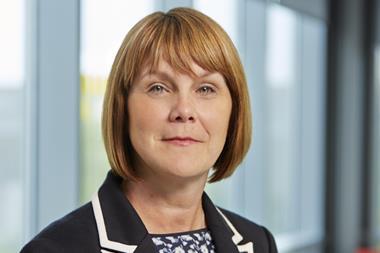The CII urges the industry to tackle the gender pay gap head on as it releases its own numbers that show it too has work to do
The CII has released its gender pay gap numbers and wants the industry to work towards tackling the gender pay gap as the first step in a long process to address diversity and inequality issues that are endemic in the sector.
All companies employing more than 250 people will have to publish information on their gender pay balance by April 2018. This must include the mean and median salaries of men and women working for them.
Organisations will be helped to address inequalities that are flagged as needing to try to reduce the gap.
The insurance sector has a gender pay gap of around 47%, compared to the national average of 18%. At Dive In Festival CNA Hardy chief executive Paul Gage described the industry as one of the ‘last bastions of white male dominance’.
“We are a strong profession, and when we behave with confidence and purpose the public will trust us to deliver. However, if we are opaque or make excuses, they will question our ability to treat customers, as well as employees, fairly.” - Sian Fisher
A PwC report highlighted that almost three tenths (28%) of those surveyed felt that employers are biased towards men in the recruitment process, though over three quarters (78%) of financial services employers are proactively trying to recruit more women. CII chief executive Sian Fisher urged insurers to get behind promoting diversity and working to close the gap.
Fisher said: “The data that firms are sharing between now and April 2018 is only the start. Our stakeholders want to see evidence of what we are doing individually and collectively to reduce the gap, and they will expect to see significant improvement in future years.”
She continued, “We are a strong profession, and when we behave with confidence and purpose the public will trust us to deliver. However, if we are opaque or make excuses, they will question our ability to treat customers, as well as employees, fairly. Publishing our gender pay information is an opportunity to show that we recognise that we serve the whole of society, and we should take this opportunity.”
In a new briefing called ‘Mind the gap’, the CII has urged insurers to look at the root causes of gender pay imbalances.
To coincide with the report’s release, the CII has published its gender pay five months early, despite being exempt as it has under 250 employees. The move is intended to encourage others to do the same.
“We see this as the first step in an ongoing process. At this stage, our focus is not on the size of the gap, but what we, as a profession, are prepared to do about it - and it must be more than the bare minimum” - Sian Fisher
Although a majority (57%) of CII employees are women, it found that mean hourly rates currently favour men by 28% as they hold more senior roles. Median hourly rates also favoured men by 18%.
It has now pledged to reduce its gender pay gap by 10% over the next 12 months.
Fisher added: “I am encouraging all businesses in the insurance sector to publish their data openly, even if like the CII, their headcount is lower than the threshold required by the rules. The public and our employees will expect to see a positive, transparent and joined-up approach to addressing it. We see this as the first step in an ongoing process. At this stage, our focus is not on the size of the gap, but what we, as a profession, are prepared to do about it - and it must be more than the bare minimum.”
She continued, “Such a commitment is the foundation on which our culture is based and we are asking all those who work in our sector to join with us to tackle and resolve the gender gap.”
Lloyd’s first ever female chief executive Inga Beale was named as CII president in August.
What actions does the CII recommend organisations take to tackle the gender pay gap?
- Review your recruitment process to make sure it is inclusive. This could include equal opportunities monitoring and offering flexible roles. Training could be used to counter unconscious bias. Gender neutral processes could be put in place, while interviews could use a scoring system. Inclusive adverts and sourcing applicants from pools where women are seeking employment could also bolster diversity.
- Staff training is key. The CII suggests that women with “caring responsibilities” should also be able to benefit from learning and training. Managers should be trained to understand unconscious bias and learn how to manage unacceptable behaviour at work. All managers should be familiar with Equality legislation.
- Make a commitment and get behind a campaign. Get involved in a campaign like ‘HeForShe’, which asks employees to work towards making equality happen and change traditional perceptions around leadership roles.
- Encourage parental leave. Make sure that employees are able to balance their work and family life. Shared parental leave means mothers, fathers and adopters can now take up to a year off work to look after a new arrival. Other countries, such as Sweden and Lithuania, offer even more progressive parental leave packages and the CII suggests employers and the government could look to them for inspiration.
Hosted by comedian and actor Tom Allen, 34 Gold, 23 Silver and 22 Bronze awards were handed out across an amazing 34 categories recognising brilliance and innovation right across the breadth of UK general insurance.










































No comments yet